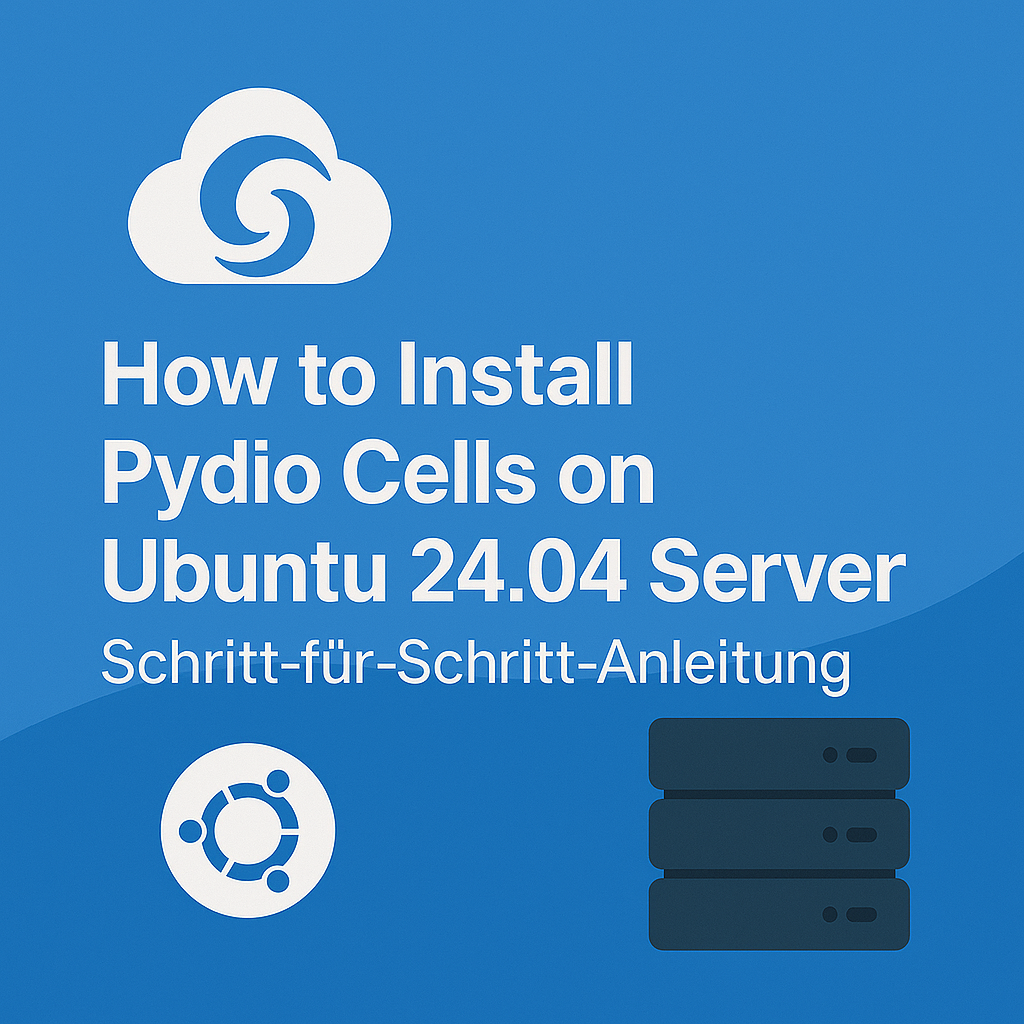Pydio Cells ist eine moderne, Go-basierte File-Sharing-Plattform,
die Enterprise-Funktionen wie SSO, ACLs und erweiterte Metadaten bietet.
In diesem Leitfaden installieren wir Pydio Cells 5.x auf
einem Ubuntu 24.04 LTS (Noble Numbat)-Server,
richten MySQL 8 als Datenbank ein, binden das System über
Nginx als Reverse Proxy ein und sichern alles mit Let’s Encrypt ab.
Voraussetzungen
- Frischer Ubuntu 24.04 Server mit Root- oder sudo-Zugriff
- Mindestens 4 GB RAM, 2 vCPU und 20 GB SSD-Speicher
- Domainname, der auf den Server zeigt (erforderlich für HTTPS)
- Offene Ports 80/443 (Nginx) & 3306 (MySQL nur intern)
Schnell & skalierbar? 🚀
Starte deinen Fileserver in Minuten auf einem flexiblen
Windows VPS von netcloud24 –
SSD-Storage, volle Admin-Kontrolle und frei skalierbare Ressourcen:
1. System aktualisieren
sudo apt update && sudo apt upgrade -y
sudo reboot2. Abhängigkeiten installieren
sudo apt install -y curl unzip gnupg lsb-release3. MySQL 8 einrichten
sudo apt install -y mysql-server
sudo mysql_secure_installation # Passwort & Sicherheit einstellen
# Datenbank & Nutzer für Pydio
sudo mysql -u root -p
CREATE DATABASE pydio CHARACTER SET utf8mb4 COLLATE utf8mb4_unicode_ci;
CREATE USER 'pydio'@'localhost' IDENTIFIED BY 'SehrStarkesPasswort!';
GRANT ALL PRIVILEGES ON pydio.* TO 'pydio'@'localhost';
FLUSH PRIVILEGES;
EXIT;4. Pydio Cells Binary herunterladen
sudo mkdir -p /opt/pydio && cd /opt/pydio
curl -L https://download.pydio.com/latest/cells/release/ubuntu-amd64/cells-linux-amd64.tar.gz \
-o cells.tar.gz
sudo tar -xzf cells.tar.gz
sudo chmod +x cells5. Erstkonfiguration (interaktives Setup)
sudo ./cells install- Bind-Adresse:
0.0.0.0:8080 - Datenbank: MySQL
- DB-Host:
127.0.0.1, Port 3306 - DB-Name:
pydio, User:pydio - Admin-User: wählen & Passwort festlegen
6. systemd Service erstellen
sudo tee /etc/systemd/system/pydio.service <<'EOF'
[Unit]
Description=Pydio Cells File Sharing Server
After=network.target mysql.service
[Service]
Type=simple
User=root
WorkingDirectory=/opt/pydio
ExecStart=/opt/pydio/cells start
Restart=on-failure
LimitNOFILE=65535
[Install]
WantedBy=multi-user.target
EOF
sudo systemctl daemon-reload
sudo systemctl enable --now pydio7. Nginx als Reverse Proxy konfigurieren
sudo apt install -y nginx
sudo tee /etc/nginx/sites-available/pydio.conf <<'EOF'
server {
listen 80;
server_name files.example.de;
location / {
proxy_pass http://127.0.0.1:8080;
proxy_set_header Host $host;
proxy_set_header X-Real-IP $remote_addr;
proxy_set_header X-Forwarded-For $proxy_add_x_forwarded_for;
proxy_set_header X-Forwarded-Proto $scheme;
proxy_http_version 1.1;
proxy_set_header Upgrade $http_upgrade;
proxy_set_header Connection "upgrade";
}
}
EOF
sudo ln -s /etc/nginx/sites-available/pydio.conf /etc/nginx/sites-enabled/
sudo nginx -t && sudo systemctl reload nginx8. HTTPS mit Let’s Encrypt
sudo apt install -y certbot python3-certbot-nginx
sudo certbot --nginx -d files.example.de # E-Mail eingeben & AGB akzeptieren9. Firewall (UFW) konfigurieren
sudo ufw allow OpenSSH
sudo ufw allow 'Nginx Full'
sudo ufw enable10. Wartung & Updates
- Pydio aktualisieren:
cells update - Service neustarten:
sudo systemctl restart pydio - Regelmäßige Backups:
/opt/pydio+ MySQL-Dump sichern
